- Joined
- Apr 9, 2009
- Messages
- 41,401
- Reaction score
- 5,706
- Location
- Iowa
- Can others edit my Photos
- Photos OK to edit
Here's the deal.
I made these 2 Moon photos using a 1500 mm f/4.9 fixed aperture lens (a Newtonian telescope that has a 12" mirror) .
But, to get the moon images focused on the camera's image sensor I had to put a 2x Barlow lens between the telescope and the Nikon D50 camera I used. The camera is mounted to the telescopes focuser using a T-ring and T-Adapter Barlow instead of using a eye piece.
Celestron 93402 T-Ring for Nikon Camera Attachment
Celestron T Adapter/Barlow 1.25 Universal (Req. T-Ring)
The 2x Barlow made the effective focal length 3000 mm, and the fixed aperture effectively f/9.8. The D50 was set to ISO 200, 1/50 for the shutter speed, and Sunlight for the white balance.
Without the 2x Barlow, I can't rack the telescope focuser far enough into the telescope to put the telescope prime focus on the camera's image sensor.
Using the 2x Barlow with a 12" mirror the moon is so big it can't all fit on the image sensor.
These are not crops of a larger photo. This is a full APS-C size frame. For more distant objects bright enough I can use a short enough shutter speed I can put a eye piece in the Barlow to get more than 2x magnification. Like if I want to get a shot of Saturn, Jupiter, Venus, or Mars.
I used the D50 because it is lightweight, and for my first attempt at doing this I wanted to make sure regarding how heavy a camera I can use.
Next time I will use my D300s so I can zoom in to check focus more effectively.
There was a fair amount of turbulent air because I was shooting towards Des Moines (50 miles away) and Des Moines and all along the line of sight was radiating today's accumulated heat up into the air between my telescope/camera and the Moon. The Moon was only about 35° above the horizon.
Any hoo. Here ya go. Note: The telescope turns the image upside down. I have turned these back over right side up.
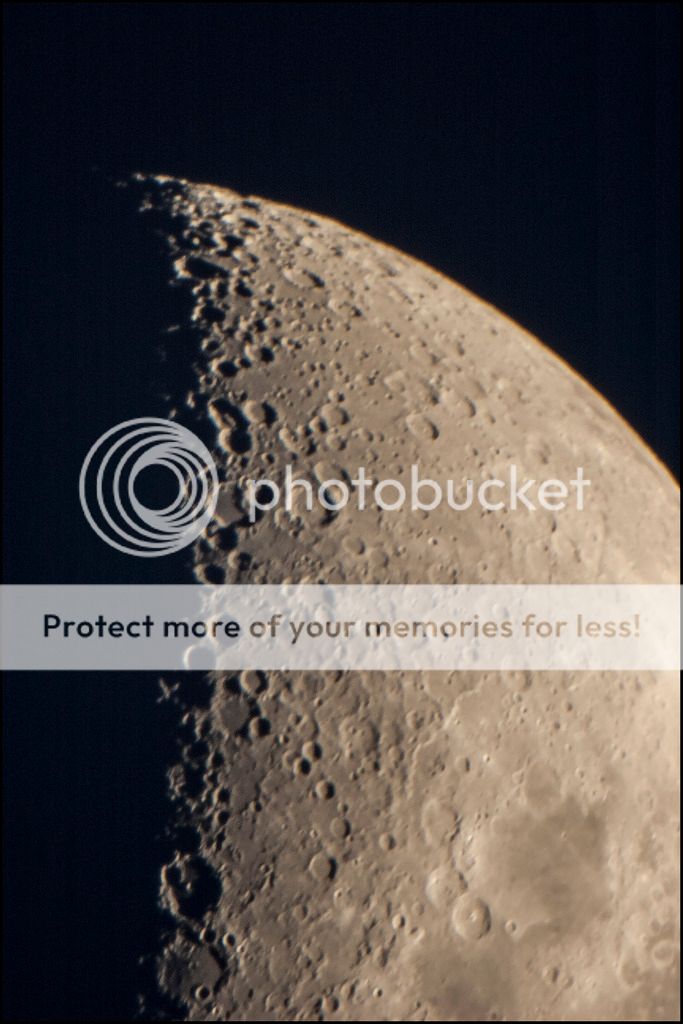
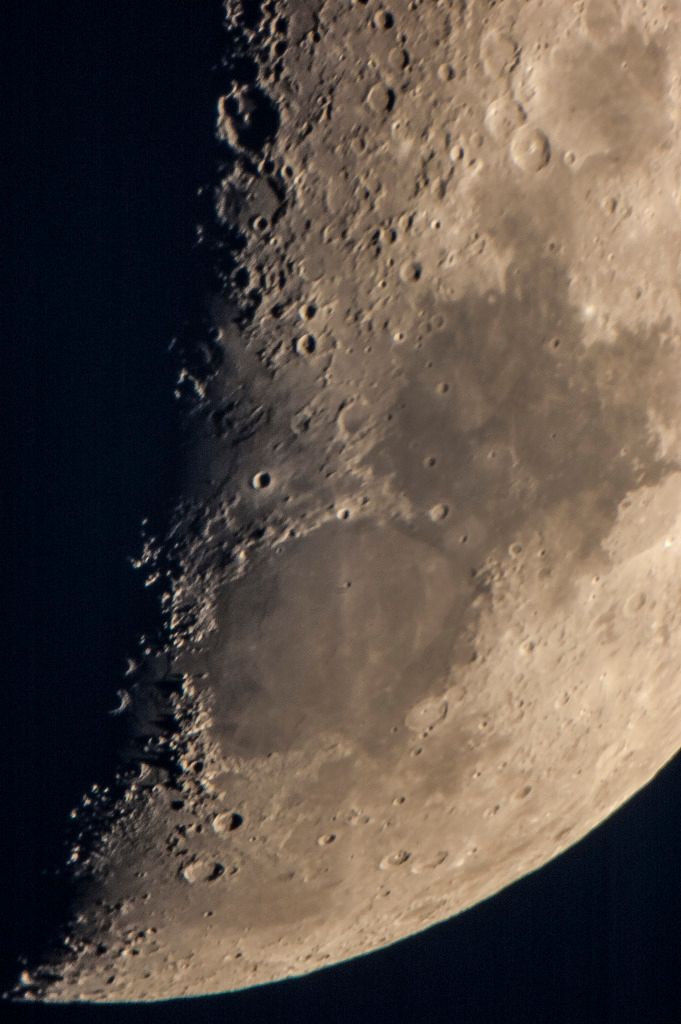
I made these 2 Moon photos using a 1500 mm f/4.9 fixed aperture lens (a Newtonian telescope that has a 12" mirror) .
But, to get the moon images focused on the camera's image sensor I had to put a 2x Barlow lens between the telescope and the Nikon D50 camera I used. The camera is mounted to the telescopes focuser using a T-ring and T-Adapter Barlow instead of using a eye piece.
Celestron 93402 T-Ring for Nikon Camera Attachment
Celestron T Adapter/Barlow 1.25 Universal (Req. T-Ring)
The 2x Barlow made the effective focal length 3000 mm, and the fixed aperture effectively f/9.8. The D50 was set to ISO 200, 1/50 for the shutter speed, and Sunlight for the white balance.
Without the 2x Barlow, I can't rack the telescope focuser far enough into the telescope to put the telescope prime focus on the camera's image sensor.
Using the 2x Barlow with a 12" mirror the moon is so big it can't all fit on the image sensor.
These are not crops of a larger photo. This is a full APS-C size frame. For more distant objects bright enough I can use a short enough shutter speed I can put a eye piece in the Barlow to get more than 2x magnification. Like if I want to get a shot of Saturn, Jupiter, Venus, or Mars.
I used the D50 because it is lightweight, and for my first attempt at doing this I wanted to make sure regarding how heavy a camera I can use.
Next time I will use my D300s so I can zoom in to check focus more effectively.
There was a fair amount of turbulent air because I was shooting towards Des Moines (50 miles away) and Des Moines and all along the line of sight was radiating today's accumulated heat up into the air between my telescope/camera and the Moon. The Moon was only about 35° above the horizon.
Any hoo. Here ya go. Note: The telescope turns the image upside down. I have turned these back over right side up.


Last edited:

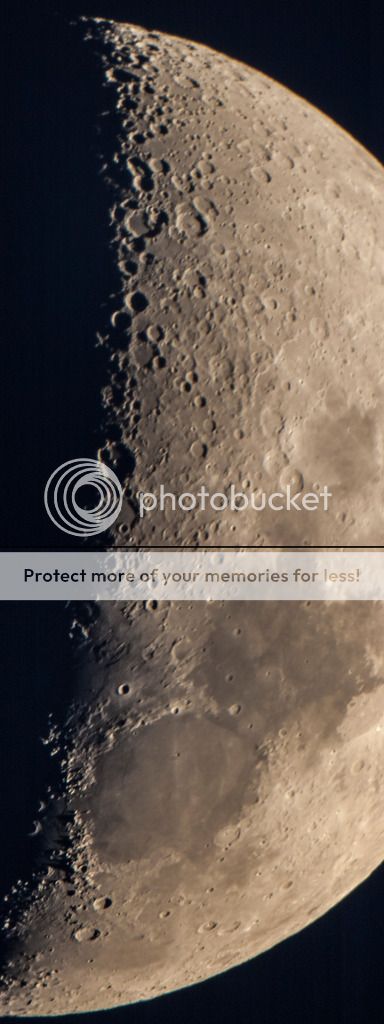
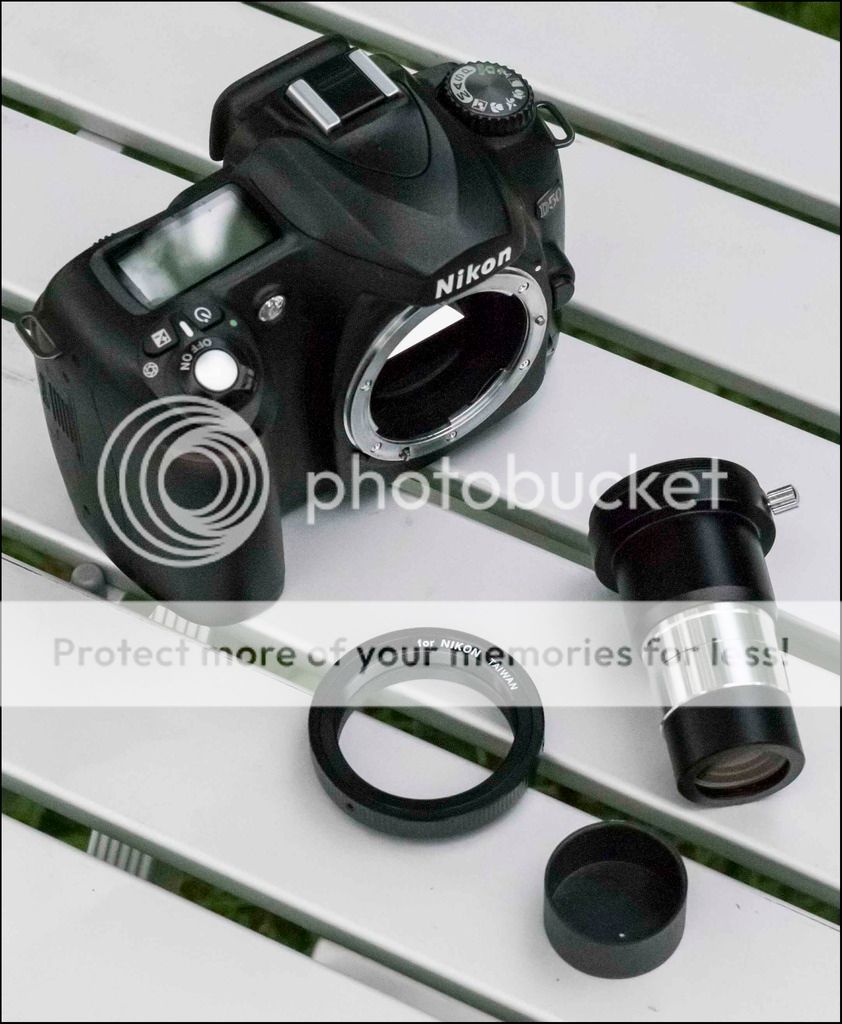
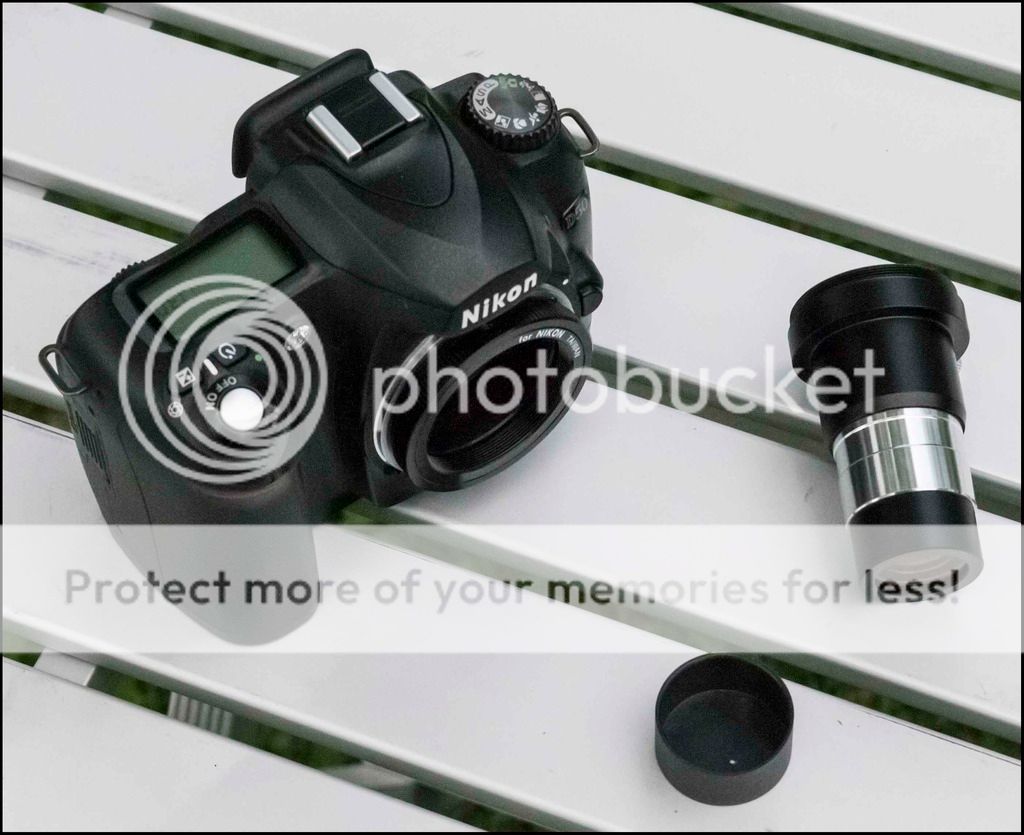
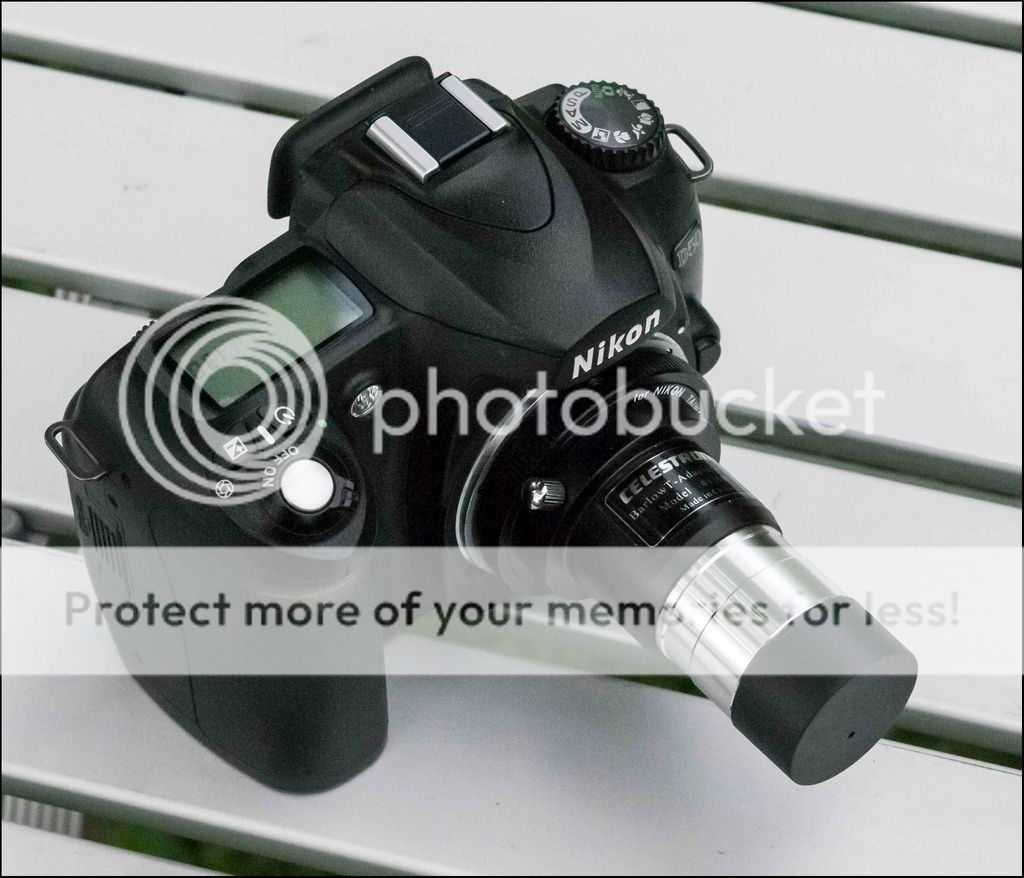
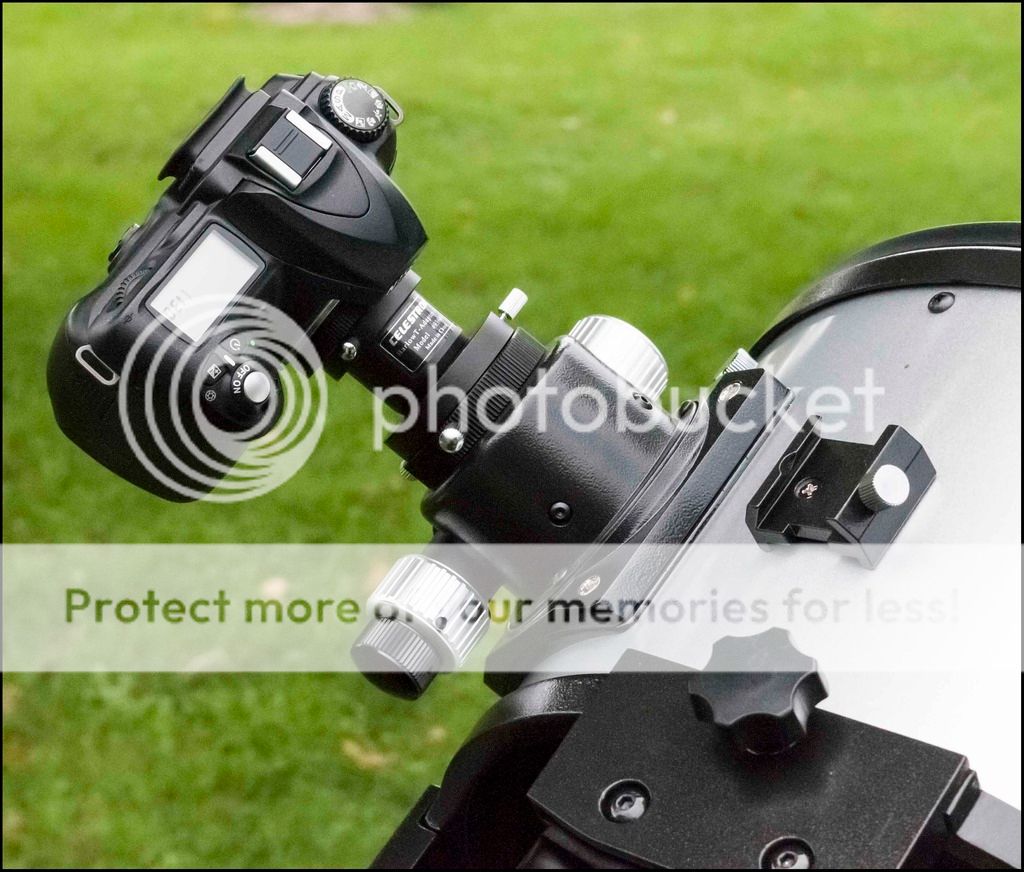
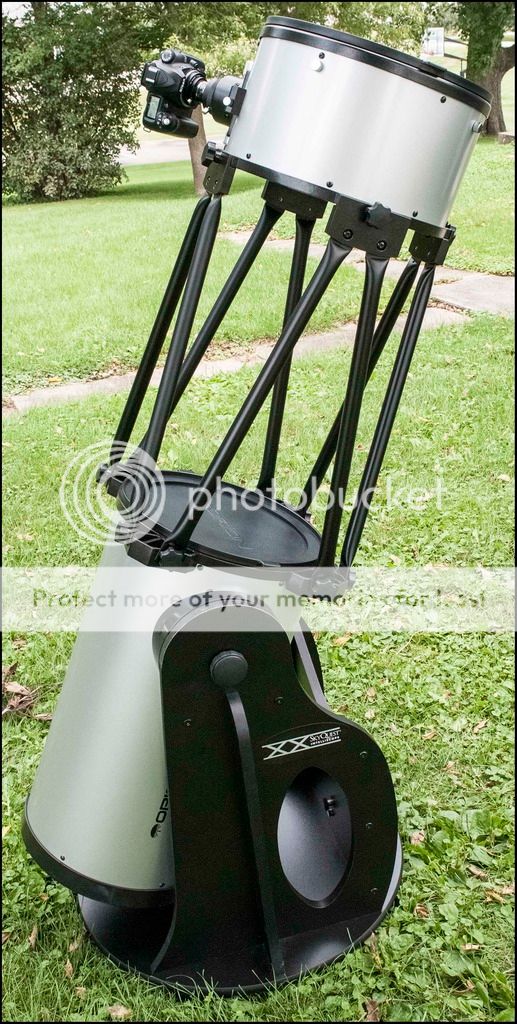






![[No title]](/data/xfmg/thumbnail/32/32710-b10dfc8ee698235cdc1e7572139173e8.jpg?1734162313)





![[No title]](/data/xfmg/thumbnail/32/32630-d78de94d84be2acf57d5e0923482b4da.jpg?1734162115)